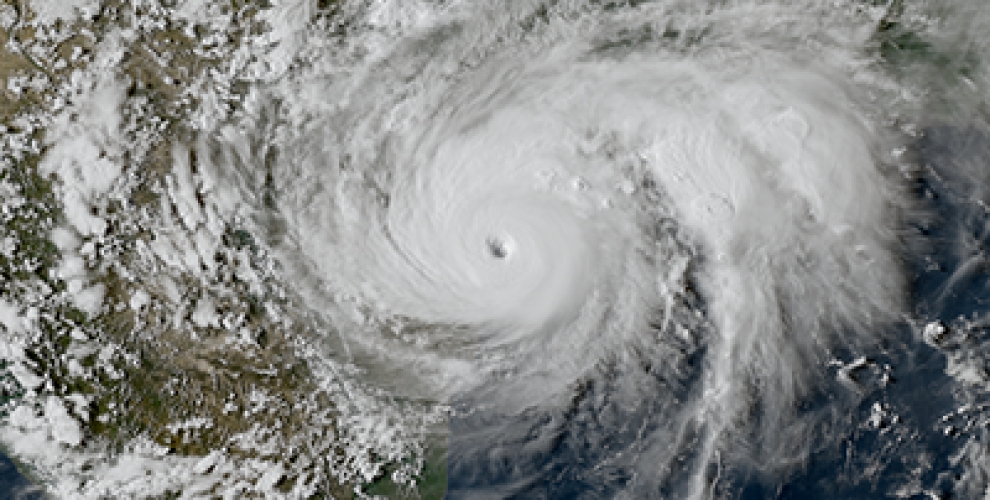Construction Site Hurricane Preparedness
By Susan Phillips, Director of Safety, Tellepsen
General contractors and our partners have a particularly important responsibility to our customers and our community during severe weather. It is critical that we have a plan ready to implement on short notice in the case of an imminent threat from a severe storm like a hurricane. Having a plan and checklist allows our teams to spring into action, efficiently secure the project site and then ensure their own personal safety and that of their families.
Every year, Tellepsen’s Safety Team reviews our Hurricane and Severe Weather Plan and Checklist to ensure it is up to date and takes into account any new lessons learned from recent events. Project sites include so much equipment, from those massive in scale like tower cranes to small items like hand tools. In order to minimize danger and damage, all of these items must be properly secured.
Tellepsen has a Severe Weather Event Response Team made up of team members from our Family of Companies. Once a storm enters the Gulf of Mexico, the team meets to initiate early warnings in order for our projects to commence preparing for the possibility of the storm. It is never too early to start purchasing supplies for projection of building/trailer, equipment, etc.
Tellepsen’s Project Site Severe Weather Plan and Checklist:
- Create emergency contact list to include owner and subcontractor contact information including mobile and home phone numbers.
- Take photos of each side of the structure and building site. This will aid in documenting damage after the storm and show precautions were taken to prevent damage.
- When first storm warnings are received, consider controlling shipments of materials and equipment.
- Secure office trailers and barricades to the ground.
- Store valuable materials and equipment inside a building in a protected area.
- Pick up loose debris and broom clean the entire project.
- Remove trash from job site and secure dumpsters.
- Secure all loose materials, duct, sheetrock, decking, insulation, roofing paper, metal toolboxes, plywood, etc. Bank with metal straps and/or secure to columns on floors. Chain all toolboxes on casters to a column.
- Remove all loose gravel from roof or store in 55-gallon drums secured to structure.
- Check roof area to make sure nothing is blocking drains or scuppers. All loose debris must be removed from the roof.
- Check and remove storm drain silt fencing at manholes that might cause flooding and properly damage.
- Remove signage not needed for safety.
- Secure signage needed for safety.
- With extra plywood, cover windows and other openings.
- Anticipate equipment you might need after storm and order it. Those items might include pumps, #9 tie wire, rope, hose, power cords, plastic sheathing, generators, radios, batteries.
- Fuel equipment, trucks and safety gas cans.
- Lower all buckets and blades on all equipment.
- Remove boards from scaffolding and secure all scaffold frames.
- Remove inadequate walkways and fencing.
- Fly down, empty and secure all portable restrooms.
- Store all job site ladders.
- Review with tilt wall engineer if bracing is still in place on tilt wall panels. Generally, these braces are designed for less than 100 miles per hour.
- Make sure critical documents are stored properly such as plans, as-built drawings, city plans and permit. Do a complete document review to identify anything else that may be difficult to replace.
Cranes:
Cranes can be especially vulnerable during a high wind event such as a hurricane or severe storm. They require more time and teamwork to secure. Communication and collaboration are key to successfully preparing a crane for such an event. Tellepsen begins with a meeting of all job site stakeholders.
Tower Crane Discussion Checklist:
- Removal of signage and temporary down lights (if needed).
- Disconnect electrical power cord and secure it at the base of the crane.
- Weathervane or slewing brake disengaged.
- Lower jacking system to lowest possible point.
- Check tower crane supporting system. Per manufacturer, crane bracing can be added to structure at 70 feet if the structure is to that point. At that point additional ballasts can be added. Until this point the only option is to weathervane.
- Confirm and discuss tower crane wind speed rating. Be aware of forecast wind speed and assess whether tower section removal is needed.
- Operator to remove all loose items from cab.
- Operator to lock and secure cab.
- Ensure 3rd party inspection after storm event.
Mobile Crawler Cranes Discussion Checklist:
- Lower boom to ground.
- Swing break into locking position.
- Ensure 3rd party inspection after storm event.
